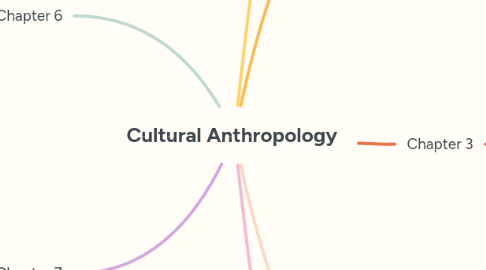
1. Chapter 6
1.1. Quote
1.1.1. "the world from which shamans gained their powers to cure and kill; the world in which humans were hunted and devoured by other creatures, instead of hunting them for food as they did in the summer" (Burt, 2013, 93)
1.2. Summary
1.2.1. In Northwest Coast Culture, the winter season is when the spirit world is entering the living world and in the summer families worked to preserve food; belief that everyone is born a cannibal
2. Chapter 7
2.1. Quote
2.1.1. "The leopard from the Forest is there as a king, the crocodile from the Waters as a policeman, the cow from the Home as a sacrificial victim" (Burt, 2013, 103)
2.2. Summary
2.2.1. These symbols demonstrated political tensions; heraldry distinguished where ties lied shown on flags and shields
3. Chapter 5
3.1. Quote
3.1.1. "With the support of NAGPRA, some Native Americans have managed to persuade archaeologists to take their inherited traditions seriously, as oral history to aid interpretation of their finds" (Burt, 2013, 80)
3.2. Summary
3.2.1. Theorists developed the drift, stone age, bronze age, iron age. The NAGPRA act gave them rights and prevented archelogists from belitting artifacts.
4. Chapter 4
4.1. Quote
4.1.1. "Such communities did indeed lack the economic organization to contribute to large-scale trade or the incentive to develop specialized technologies for creating luxury goods, complex weapons, or grand monuments for the benefit of a privileged few" (Burt, 2013, 54)
4.2. Summary
4.2.1. Primitive Art is suppose to be early, but it could have a negative connotation to describe small communities that are illiterate and mystical; paradox invented by noble savage
5. Chapter 3
5.1. Quote
5.1.1. "Chinese painters were praised for capturing the essential qualities of their subjects....but through the mastery of techniques, which also represented the essential character of the painter" (Burt, 2013, 48)
5.2. Summary
5.2.1. The Orient was built by Europeans who disliked asian and indian art. Islamic art poorly represented bc does not show beyond Egyptian collections; nudity was a regular and public occurence as well as femininity
6. Chapter 2
6.1. Quote
6.1.1. "rejected conventional standards of naturalism and beauty; contradicted the predictable, slow cycles of early, middle, and late phases of artistic development" (Burt, 2013, 35)
6.2. Summary
6.2.1. Greeks and Romans were praised, modern artists looked down on medieval and renaissance art; egyptians painted mosques despite not seeing them in detail
7. Chapter 1
7.1. Quote
7.1.1. "Sloane collected mainly natural history, but also artificial curiosities, partly to illustrate human progress through the art of different ages and nations" (Burt, 2013, 13)
7.2. Summary
7.2.1. The collections were more than eye candy, but to show human progress through many ages and nations. Departments and Acts formed to separate library from museum material. After British Museum matched biblical antiquities, it became known for its insane beauty and depth.
